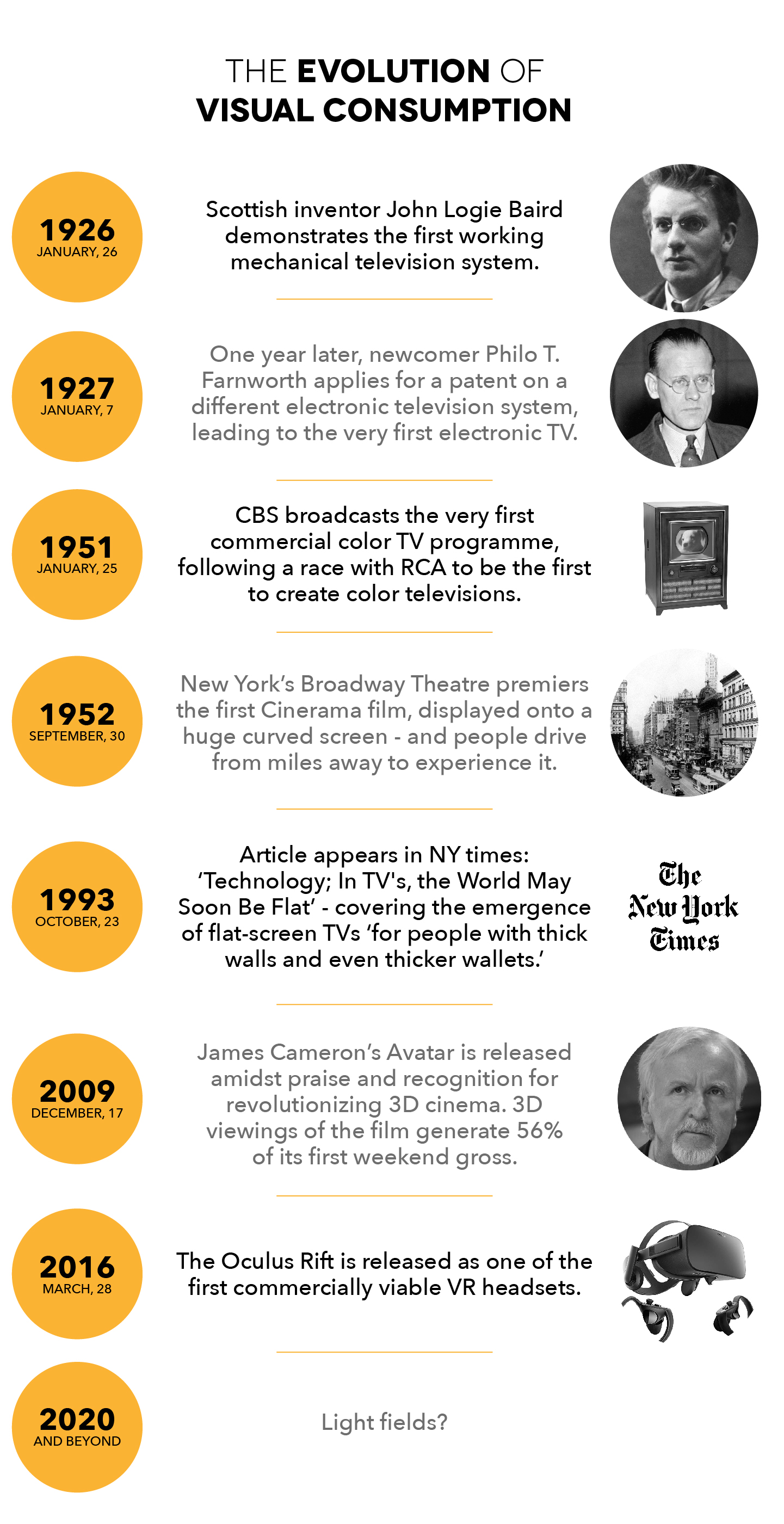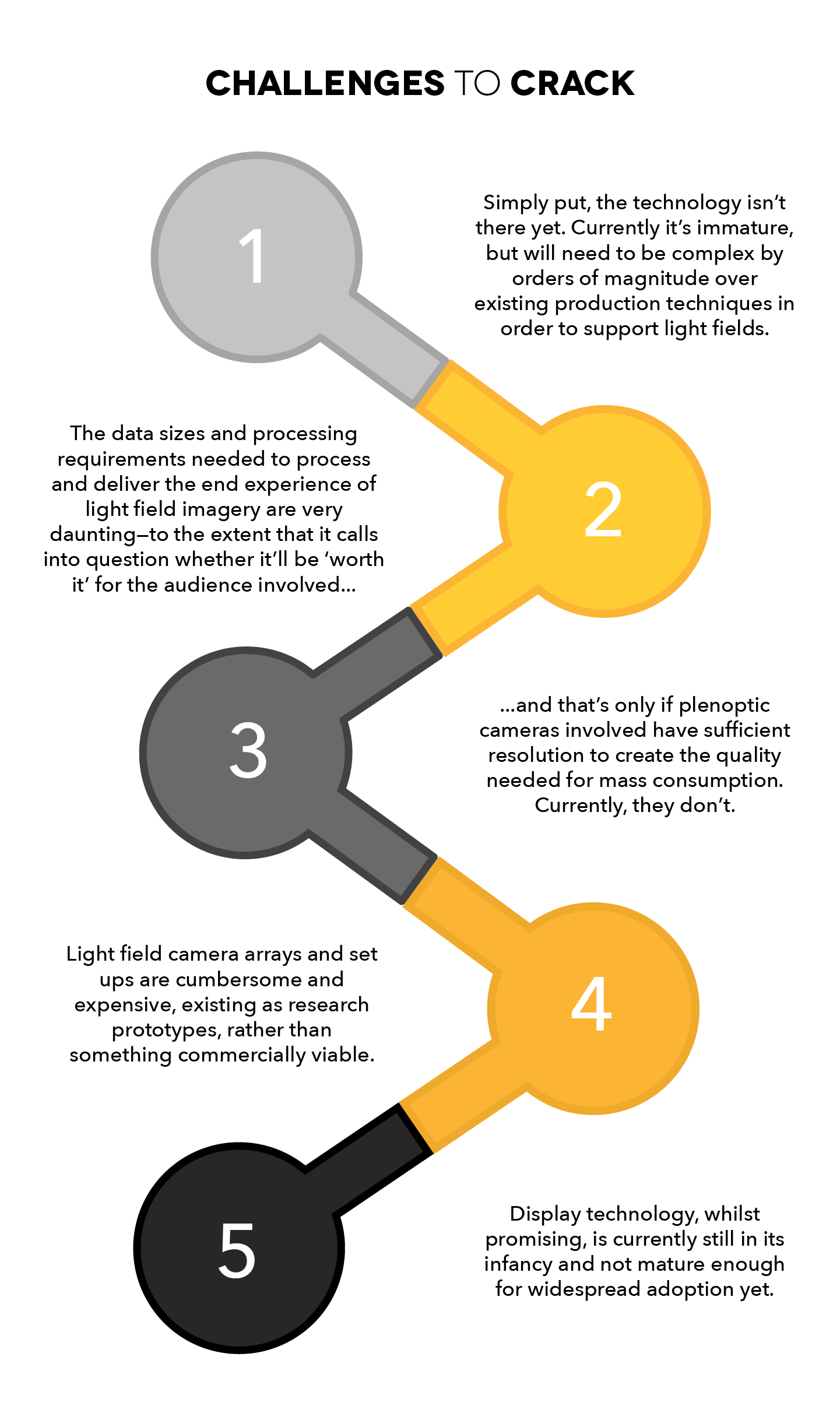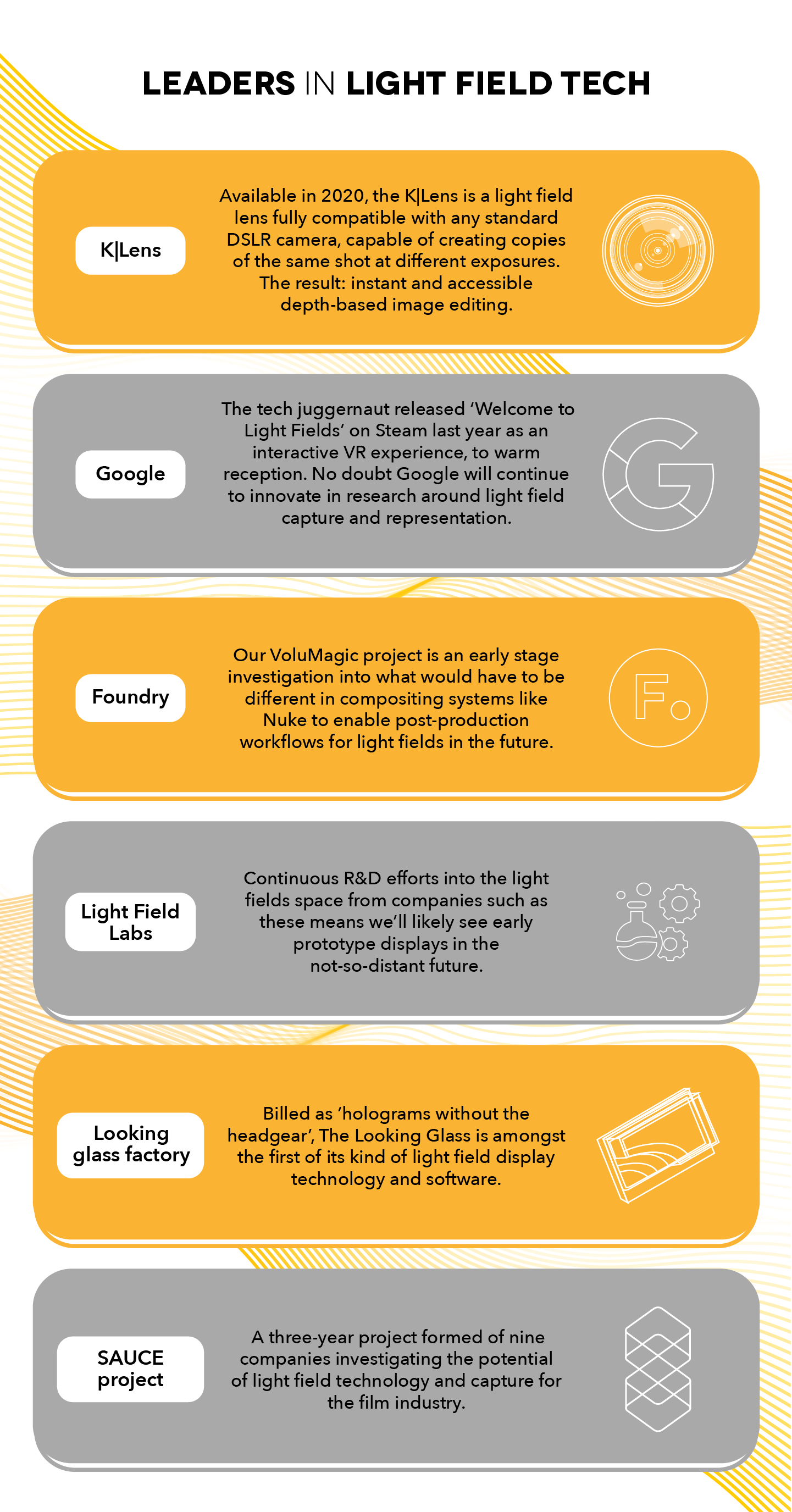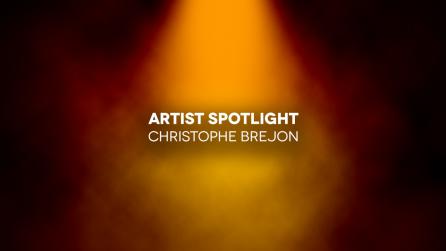Light Fields: The Quest for Immersion
The arc of visual storytelling is a fascinating one.
We can go all the way back to the inception of theatrical entertainment - but for the purposes of this article, it’s best to start with something a bit more recent (and relevant).
The very first electronic television was invented in 1927, appearing commercially in America over ten years later in 1938.
What follows next is a slew of visual experiences, each trying to improve on the previous: color TV. Flat-screen TV. Curved TV. 3D films—and most recently, the dawn of VR.
Underpinning each is a common, recurring theme: the undeniable pursuit of increasingly immersive visual experiences.
The next contender to undertake this quest is light field technology. Bold but burgeoning, light field tech hopes to transform the way we ingest visual media—but as we’ll dive into below, this has proven to be no easy feat.

Light fields in layman’s terms
Turn your head. Any objects within your field of view are viewable thanks to the rays of light that are bouncing off them—or, ‘light fields’. When you move your head, you experience light reflecting off these surfaces in different ways, subtly changing and diffusing surface textures to ground your visual experience in reality.
Light field technology aims to capture and simulate this experience, allowing us to see a created scene as we see the real world. Depth, true stereo and parallax when we move our head combine artificially thanks to light field data to give the impression that one is ‘really there’.
There are some other factors to consider when attempting to recreate a realistic visual experience, like resolution, color and brightness. But light field technology certainly covers the most complicated aspects of this process.
Described as the ‘ultimate’ visual experience, the long-term goal is to research, develop and manufacture immersive and efficient systems in order to achieve this experience.
By doing so, product manufacturers and members of the scientific community hope to overcome and improve on current visual experiences, such as VR where the user is often aware of the headset and true parallax isn’t achievable. In contrast, light field visualization potentially requires no viewing gear to experience the end result.
The potential for light field applications is tremendous—but we aren’t there yet.
Challenges to crack
Every quest has its obstacles, and light field technology certainly has its fair share of challenges to overcome.
Despite the years and years of research and development poured into light field technology, the harsh reality is that it stands a chance of never really ‘happening’.
Unless it can overcome the challenges detailed below, it may be a while until it emerges in real-world application.

Exciting developments
Despite these challenges, light field technology continues to innovate and develop at pace.
The movers and shakers in the light field space are determined to make it an industry standard, rather than exception—and, eventually, commercially viable.
The result is a slew of very exciting projects and prospects on the horizon.

Light fields: light-years away?
With a surfeit of promises under its belt—and a matching amount of challenges to match—what does the future hold for light field technology?
So far, we’ve seen multiple cycles of stereo-3D happen in film history, and multiple cycles of VR for entertainment. Each cycle has improved on the last, but none have yet been at a good enough threshold to gain widespread adoption. Instead, we fall back to the standard displays in our front rooms.
Delivering a light field experience that is ‘good enough’ on top of this to break our viewing habits is an extraordinary engineering feat—and might not be coming any time soon. There's been a body of research in this area for decades, which shows how slow progress can be towards something that is, in theory, ready for an audience.
Even if light field tech, and the people behind it, makes a breakthrough in the not-so-distant future, it's likely to be a commercial opportunity for a while, used as large-screen formats—advertising displays, cinema, and events—where the cost of doing the work can be justified against the Return on Investment.
The bottom line: whether light field technology will ever find its home within our homes remains a question that currently can’t be time stamped—but that’s not to say it’s out of the question completely. Watch this space.


